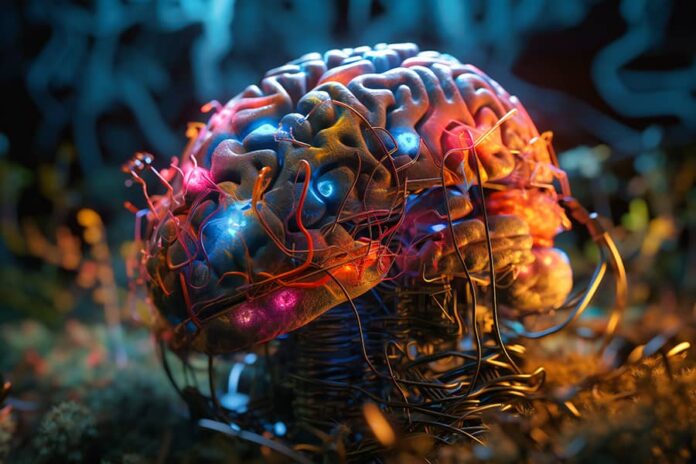A recent investigation by researchers in France, published in Translational Psychiatry, sheds light on the impact of depression on the brain’s ability to process both positive and negative experiences.
The findings indicate that during episodes of depression, certain neural pathways become overly active when responding to negative stimuli, whereas those associated with positive stimuli exhibit diminished activity.
This alteration in brain function may help explain the negative perspective often observed in individuals suffering from depression. Gaining insight into how depression influences the brain’s interpretation of daily experiences is crucial for creating more effective treatment options.
Depression is characterized by a negativity bias, which leads individuals to perceive situations and sensory inputs—such as visual images, sounds, and smells—in an unduly negative manner.
While it is known that this bias significantly contributes to the persistence of depressive symptoms, the underlying neurological mechanisms remain poorly understood. The recent study aimed to investigate the neural circuits related to this bias, with a particular emphasis on the amygdala—a region recognized for its role in emotional processing.
Individuals with depression experience changes in how they perceive emotional stimuli due to negative emotional biases. Consequently, positive stimuli lose their appeal, while negative stimuli are perceived as even more distressing.
This observation comes from researchers Chantal Henry, a psychiatry professor at Paris Cit University, and Mariana Alonso, a research associate at Institut Pasteur, both of whom are part of the Emotional Circuits research group.
These biases contribute to the onset and persistence of depressive symptoms and can be evaluated through various human tests.
However, there is a scarcity of animal tests that effectively measure emotional bias in a way that can be applied to human conditions. Understanding the mechanisms behind these biases is vital for recovery from depression, highlighting their importance in research efforts.
To explore this issue further, the researchers conducted studies involving human subjects and a mouse model for depression. In the human segment of their study, they enlisted 48 adults diagnosed with bipolar disorder; among them were 23 individuals currently experiencing depressive episodes.
Additionally, they included 11 participants without any mental health history as a control group. All subjects participated in an odor evaluation test designed to gauge their perceptions of various smells.
Through this approach, the researchers aimed to identify any negativity bias in odor perception among participants, particularly those suffering from depression.
According to Henry and Alonso, the olfactory preference test we designed is straightforward yet effective for examining key emotional processes linked to the development and persistence of depression.
Simultaneously, the researchers induced a depressive-like state in mice by administering corticosterone, a chemical known to trigger behaviors similar to depression. They conducted an odor preference assessment where the mice were exposed to neutral, pleasant, and unpleasant scents while their reactions were recorded.
The team observed how much time the mice spent near each scent to determine if those exhibiting depressive behaviors showed a tendency towards negativity.
To gain deeper insights into the brain mechanisms at play, imaging techniques were employed on the mice to analyze alterations in brain circuitry, particularly focusing on two pathways within the amygdala: one connecting the basolateral amygdala to the nucleus accumbens, associated with positive feelings, and another linking it to the central amygdala, which is related to negative emotions.
The study revealed notable distinctions between groups of depressed and non-depressed subjects, both in humans and in mice.
Those experiencing depression, along with mice exhibiting depressive-like traits, displayed a tendency to respond more unfavorably to various odors, including those that are neutral or positive.
This inclination towards negativity was linked to increased activation in the brain regions responsible for processing adverse experiences. Specifically, in the mice, the circuit connecting the basolateral amygdala to the central amygdala showed greater activity among those with depressive-like characteristics, while the pathways related to positive experiences demonstrated reduced activity.
Mice receiving treatment with fluoxetine, an antidepressant, exhibited a decrease in their negativity bias, indicating a connection between these neural circuits and depressive symptoms.
Furthermore, when researchers activated certain neurons within the basolateral amygdala-to-nucleus accumbens pathway of depressive mice, there was a noticeable reduction in their negativity bias; they began responding more favorably to neutral and pleasant scents.
However, this intervention did not alter their negative reactions to unpleasant odors, implying that other brain pathways may be necessary to fully tackle this bias associated with depression.
By manipulating these neurons in mice, we successfully corrected this bias by enhancing the appeal of positive odors and facilitating recovery from depressive symptoms; thus highlighting its importance as a target for understanding how antidepressants function.
The research provides insights into how certain neural pathways are linked to negativity bias, yet it has its drawbacks. The odor-based assessments conducted on both humans and mice offered a straightforward method for gauging emotional reactions, but they may not fully encompass the intricate nature of depressive symptoms.
Furthermore, although the mouse model serves as a valuable tool for investigating specific facets of depression, it fails to replicate the complete human experience of the disorder, especially in instances of bipolar disorder.
Future investigations could delve into other brain circuits that might play a role in depressive symptoms and assess whether similar biases emerge from visual or auditory inputs. Over time, this research could pave the way for scientists to devise more targeted treatments for depression.
By concentrating on particular brain circuits linked to negative and positive perceptions, researchers aim to formulate therapies that mitigate negativity bias in depressed individuals, providing alternative solutions for patients who do not respond well to standard antidepressants.
According to Henry and Alonso, approximately 30% of individuals with depression do not benefit from traditional antidepressant treatments.
Our objective is to advance this research to enhance our understanding of the underlying mechanisms at cellular and molecular levels so we can pinpoint more specific molecular targets with potential antidepressant effects.

